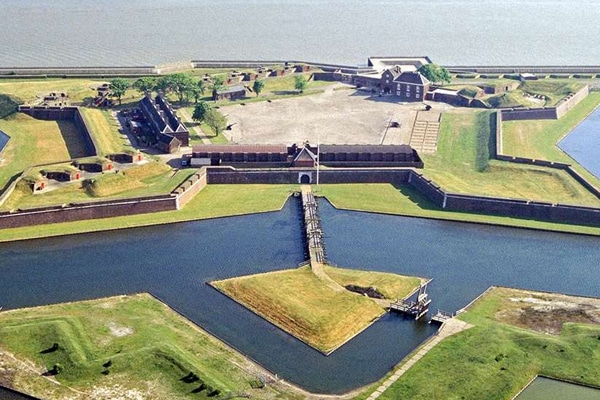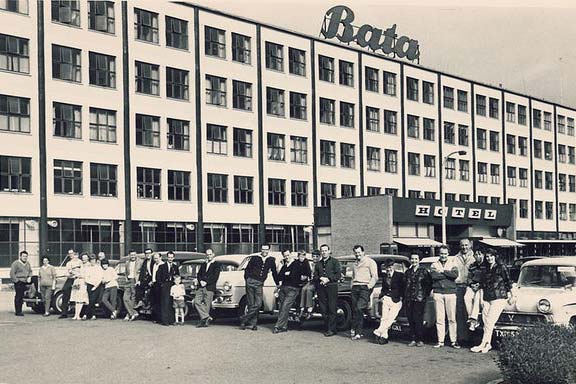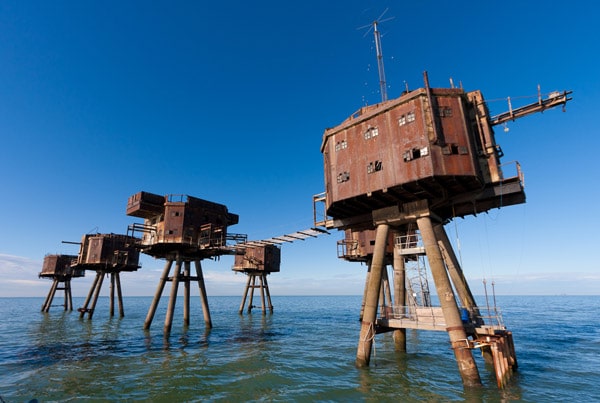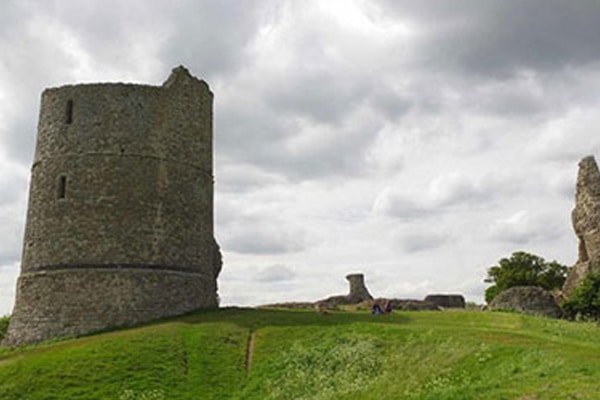If you want to take a trip through history, Essex is packed with it, from castles to coastal forts. You’ll discover lots about the world wars and Essex heritage.
Check out our fare offers to get the best deal for you when you travel by train. There’s something for everyone, with our online advance or kids for £2. Download our app and order a Smartcard for the quickest way to buy your tickets in advance and avoid ticket office queues.
Tilbury Fort

Tilbury Fort dates back to the 1500s, although what you see now is a twentieth century design. It was built to defend London from sea attack, however, it never came – at least not from the water. Its most notable achievement was the shooting down of a German Zeppelin by anti-aircraft guns in World War One. In World War Two it sustained heavy damage from the Luftwaffe bombings, and now the fort is cared for by English Heritage.
Nearest c2c station: Tilbury Town – a half hour walk away.
Closed Monday and Tuesday. Open from 10am – 5pm Wednesday to Sunday.
The Bata Estate

The Bata Estate and Factory at east Tilbury is an early modernist gem that’s now a designated Conservation Area due to its historical architectural significance.
Built in the 1930s on the same site as the Bata shoe factory, The Bata Estate was built as a kind of utopia for the factory workers.
There was a Bata supermarket, a Bata shoe shop and a Bata farm as well as tennis and netball courts, a swimming pool and full-size football pitches. These days the long-closed Bata factory is something of an industrial ghost on the marshy landscape. But very photogenic.
Nearest c2c station: East Tilbury – a 20 minute walk away.
Coalhouse Fort

Coalhouse Fort has a fascinating history. In World War Two it was used to monitor the degaussing equipment of ships leaving Tilbury docks. Degaussing is a process whereby the magnetic field of a ship would be neutralised by electrical currents. This meant they were not vulnerable to magnetic mines. The fort was staffed by the Women’s Royal Naval Service and they were under strict orders not to discuss their highly classified work.
If you’re heading there, try the guided tour, which takes between 45 and 60 minutes and allows you access to the dungeons and roof area for a breathtaking view.
Nearest c2c station: East Tilbury – a 10 minute walk away.
Maunsell Towers Sea Forts

Situated on the mouth of the River Thames, Shoeburyness has many relics and ruins from World War One and Two. It became an important defence against air and sea invasion, with the Shoebury Artillery barracks. If you go for a stroll along East Beach you can still see the remnants of a defence boom.
Out to sea are the Thames Sea Forts, also known as the Maunsell Towers. They were initially built to defend London from both air and naval attacks, but in the 1960s they were used by a number of pirate radio stations. They are currently being restored by a group of enthusiasts with the help of several government agencies.
Nearest c2c station: Shoeburyness, although if you’re interested in a boat trip they leave from Southend pier.
Hadleigh Castle

Visit the romantic ruins of a royal castle overlooking the Essex marshes. Hadleigh Castle was built in 1215 by Hubert de Burgh, but extensively refortified by Edward III during the Hundred Years War, becoming a favourite residence for the ageing King.
It offers great views of the Thames estuary and Canvey Island. All that’s left are two towers and numerous low walls, but it’s a great spot if you’re looking for something scenic with historical value. If you want to get more out of your visit, take a walk to the local fishing village of Old Leigh, which has its roots in the 1086 Doomsday Book.
With a farm next to Hadleigh Castle you’ll have plenty to see and do.
Nearest c2c station: Benfleet or Leigh-on-Sea – a 50 minute walk away.

